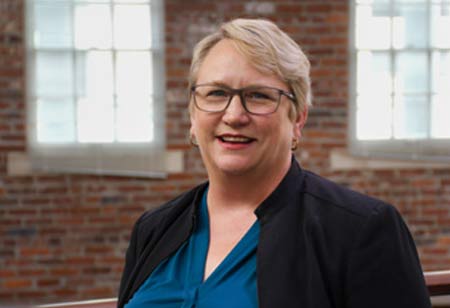Sometimes, the most impactful solutions are born from simplicity. In the realm of organization effectiveness, the start-stop-continue feedback model emerged as a game-changer. It’s a straightforward concept: ask your team what they want you to start doing, stop doing, and continue doing, and do that!
As part of a leadership development training team, I was used to teaching new concepts (Start) and coaching leaders to leverage their strengths (Continue). However, the basic notion that ceasing certain actions could also be a potent tool for growth was revolutionary. Now, let’s apply this model to the world of civic innovation and reimagining city processes. While we often focus on adding new features or services to meet evolving needs, considering the option of stopping certain practices can be transformative. Let’s take a real-world example:
The City of Bloomington, renowned as an International Tree City by the Arbor Day Foundation, faced a leafy dilemma. While the Tree City distinction brought benefits, it also meant an abundance of leaves, both public and private, littering roads and sidewalks and clogging storm drains. The city’s long-standing solution was a vacuum collection service that required residents to rake leaves to the property edge and wait for collection trucks.
However, this approach had its share of problems:
Residents were dissatisfied with the timing of a service that did not align with when leaves fell.
Residents wanted to know when trucks would be in their neighborhood.
Surveys and interviews pinpointed the core problem: the vacuum collection service’s timing mismatch with nature and residents’ schedules
High physical demands made staffing difficult.
Declining funding from motor vehicle taxes.
Carbon-intensive diesel trucks impacted the city’s environmental goals.
In 2020, a City of Bloomington innovation team embarked on a human-centered design journey to address these issues. Surveys and interviews pinpointed the core problem: the vacuum collection service’s timing mismatch with nature and residents’ schedules.
Alongside residents, the team brainstormed and prototyped solutions, including communication alerts, centralized collection points, optimized collection routes, and mulching/composting support with an on-demand collection option. Feedback from these prototypes hinted at something intriguing: What if we did nothing to manage the leaves?
Some research suggests that leaving leaves undisturbed could improve soil quality and protect pollinators. But it also raised concerns – while dissatisfied with the timing of the service, many appreciated the convenience of a vacuum service and a leaf-free aesthetic mattered.
The question then became: How else might we keep leaves off the streets and sidewalks without the vacuum service? Bloomington has a yard waste collection service that circulates most of the year, so why not support residents in mulching and composting in their yards when their particular trees were de-leafing while promoting this existing option? It ticked all the boxes.
In 2021, a pilot program with 493 households proved this approach’s feasibility. Recommended improvements from the pilot included increasing yard waste collection frequency during leaf season and assisting physically challenged residents.
Starting this year, the city now offers residents guidance on mulching and composting best practices, doubles the yard waste collection frequency in November, and provides a volunteer matching platform for those in need of assistance. These changes are projected to save the city around $400,000 in operating costs, align service timing with nature and residents, reduce the carbon footprint, and enrich soil quality, all while fostering a sense of community.
So, the next time you’re pondering ways to enhance a city process, program, or service, remember not to limit yourself to additions alone. Dive deep into unmet needs, and be open to the possibility that sometimes, less can be more


